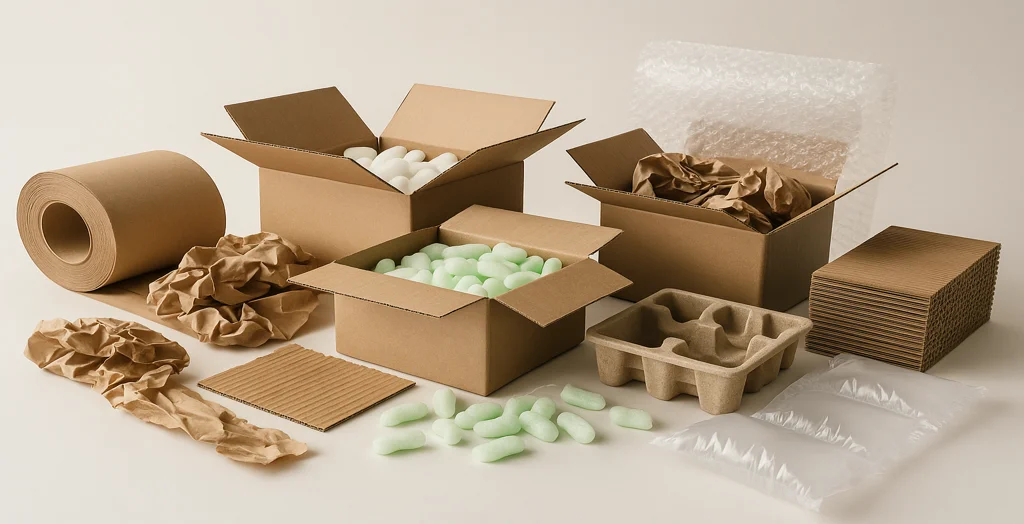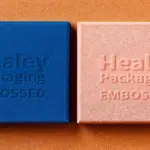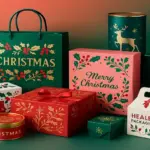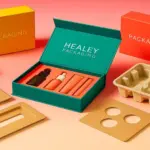TL;DR: The Shocking Truth About Damaged Deliveries
- Over 30% of returns happen due to poor packaging — don’t let yours be next.
- Protective packaging isn’t just bubble wrap — it’s a science of safety and branding.
- Foam inserts, air pillows, and molded pulp all serve different protection goals.
- Eco-friendly doesn’t mean flimsy — sustainable cushioning is real and reliable.
- Choosing the wrong packaging can wreck products and reputations.
- Want zero returns and five-star reviews? Custom-fit protection is the answer.
Your Product’s First Line of Defense: Protective Packaging
Imagine this: A customer excitedly opens their parcel only to find a shattered candle jar or a leaking lotion bottle. Frustrating, right? That one moment can undo months of brand-building. In the age of eCommerce, protective packaging isn’t just an option—it’s your product’s personal bodyguard.
From fragile glassware to premium skincare, the right protective packaging prevents damage, reduces returns, and enhances customer trust. Whether you’re a cosmetics startup or a subscription box service, this guide will help you choose the best materials for safe, stylish delivery.
What Is Protective Packaging?
Protective packaging includes any material or structural support designed to keep your product safe during storage, handling, or shipping. It shields against:
- Physical impact (drops, bumps)
- Vibrations in transit
- Moisture or temperature fluctuations
Protective packaging applies across primary (product-level), secondary (retail/display), and tertiary (shipping) packaging layers.
Why It’s Crucial for Safe Delivery?
- Product Safety: No one wants scratched bottles or smashed jars.
- Customer Experience: A pristine unboxing boosts satisfaction.
- Brand Reputation: Broken products = bad reviews.
- Cost Efficiency: Less damage = fewer replacements.
- Sustainability: Reusable or recyclable options reduce landfill waste.
"Protective packaging pays for itself by cutting damage claims and building trust."
Types of Protective Packaging Materials
Here’s a breakdown of the most common protective packaging types and when to use each:1. Bubble Wrap
- Lightweight cushioning for fragile items
- Perfect for: glassware, electronics, candles
- ✅ Available in recyclable variants
2. Foam Inserts & Sheets
- Precision-cut to fit specific products
- Perfect for: perfumes, tech devices, jars
- Comes in EPE, EVA, PU foam
3. Air Pillows & Inflatable Cushions
- Void fill that reduces box movement
- Perfect for: bulkier or boxed items
- ✅ Look for biodegradable options
4. Paper Cushioning
- Includes kraft paper, honeycomb wraps
- Offers padding + recyclability
- Ideal for: eco-conscious brands, ceramics, books
5. Corrugated Inserts & Dividers
- Adds internal support in larger boxes
- Prevents item movement in multi-product kits
6. Packing Peanuts
- Fills awkward spaces
- Choose: biodegradable starch-based versions
7. Molded Pulp Packaging
- 100% compostable
- Excellent shock absorption
- Perfect for: electronics, fragile retail
8. Stretch & Shrink Wrap
- Secures bulk shipments or pallets
- Moisture-resistant
Choosing the Right Material for Your Product
Product Type |
Recommended Material |
Notes |
Fragile items (glass) |
Foam inserts, bubble wrap |
Prioritise cushioning |
Premium goods (cosmetics) |
Corrugated or custom foam inserts |
Structure + visual appeal |
Eco brands |
Paper honeycomb, molded pulp |
Recyclable and compostable |
Heavy products |
Double-wall corrugated, air pillows |
Weight support |
Electronics |
EPE foam, anti-static film |
Shock + static protection |
Eco-Friendly Protective Packaging Options
Sustainability and safety can go hand in hand:
- Recyclable bubble wrap
- Corrugated honeycomb pads
- Biodegradable air pillows
- Molded pulp trays and inserts
"Looking to go green? Explore our kraft-based protective packaging solutions."
How Protective Packaging Enhances Brand Image?
Protective doesn’t mean plain. Today’s smart brands combine:
- Custom-printed foam inserts
- Eco fillers with custom branding
- Tissue wraps + thank-you notes
"Customers remember how your product arrived — neat, secure, and beautiful."
Mistakes to Avoid
- Overpacking – adds cost and waste
- Ignoring eco options
- No product testing before rollout
- Choosing the wrong board grade or void fill
"Test your packaging with real-world delivery trials before launch."
Final Thoughts: Protection + Presentation = Perfect Packaging
Protective packaging isn’t just about padding—it’s about professionalism.
At Healey Packaging, we design protective packaging that does both: keeps your items safe and makes your brand shine. Ready to level up your packaging?
Let’s talk custom-fit protection that delivers. Explore our shipping & protective boxes
Quick Answers on Fragile Items, Costs & Eco-Options
What is the best protective packaging for fragile items?
Foam inserts or corrugated dividers offer excellent cushioning.
Is bubble wrap eco-friendly?
Traditional bubble wrap isn’t, but recyclable versions exist.
What are eco-friendly protective packaging options?
Paper honeycomb, molded pulp, starch peanuts.
How can I design protective packaging for my product?
Work with custom packaging experts to tailor fit and materials.
Does protective packaging affect shipping cost?
Yes, but smart material choices reduce both damage and weight.








